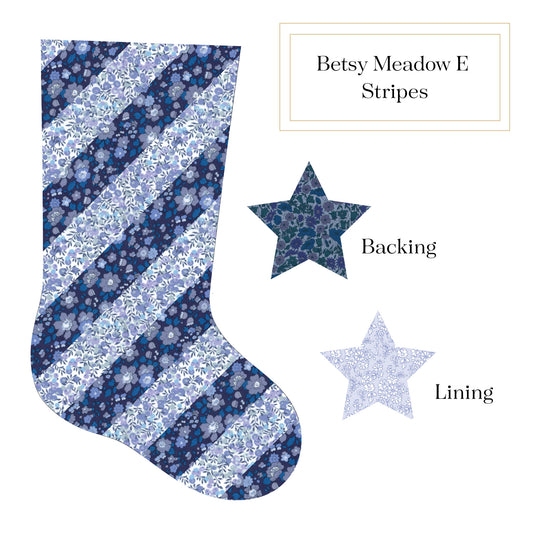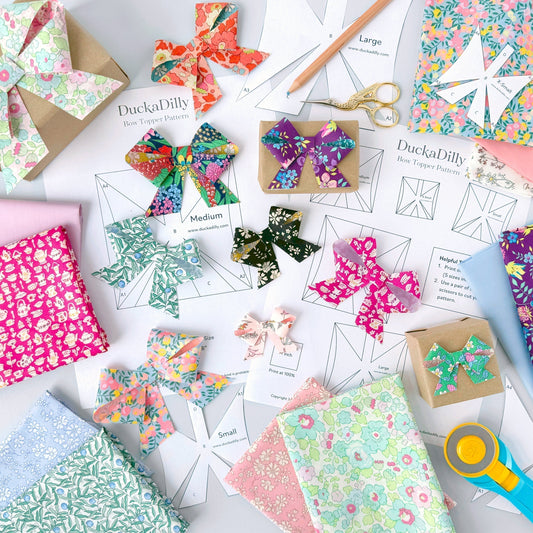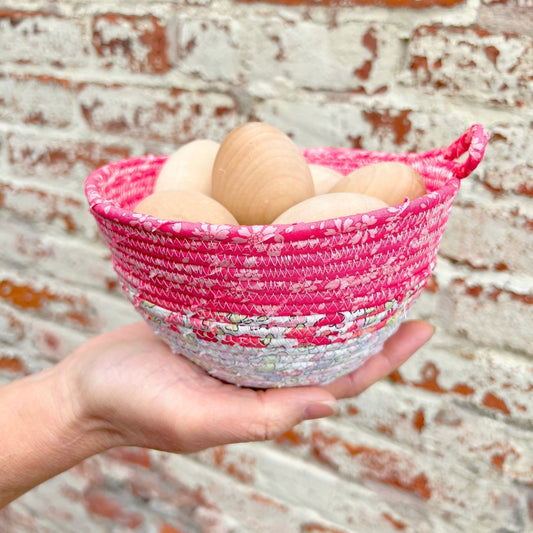The Striped Jingle Stocking is perfect for your holiday fabric stash and a wonderful introduction to Foundation Paper Piecing (FPP). Whether you prefer traditional candy stripes or a more scrappy version, the results will be stunning!
Follow along as we guide you through the process of making a stocking. This Christmas stocking is beautiful on the inside and out. So, visit your fabric stash of Christmas' past or check out our Jingle Stocking Kits. The possibilities are endless and the memories are priceless!
Fabric Requirements
For directional prints, check the orientation and pattern match before cutting. If using Tana Lawn®, the length of your sock will align with the lengthwise grain (selvage).
The fabric for the stripes can be composed of strips measuring 3 inches (width) by 4 to 17-1/2 inches (length).

Other Project Supplies
- Foundation Paper Piecing (FPP) paper
- Glue stick
- Cutting mat
- Rotary cutter
- Iron and ironing board
- Pins or Wonder Clips
- Scissors
- Sewing machine and good needle
- Polyester thread (such as Mettler or Güttermann)
Step by Step Instructions
Step 1: Printing and Assembling Your Pattern
a) Click to download the Striped Jingle Stocking Pattern as a right facing or left facing sock. You can also access the pattern by visiting the DuckaDilly Free Downloads page. The pattern should be printed at 100% scale. Print on regular printer paper or FPP paper for easier paper removal.
b) Using a ruler and a rotary cutter, trim each pattern piece on the dotted lines.

c) Neatly assemble your cut pieces using a washable glue stick.


d) Once assembled, roughly trim a 1/2 inch border around the entire pattern. We like to leave a small border when doing FPP projects.

Step 2: Coming Up With A Design
The fabric requirements listed in the table above are for traditional candy stripes. If you would like a scrappier stocking, see below for strip lengths that correspond to the template.

Step 3: FPP Your Stocking Front
a) When you have decided on your stripe layout, cut your strips and complete your stocking front using the FPP pattern.
If you are new to this technique or need a refresher, please visit here for a helpful tutorial.
b) Once your sock is sewn, carefully cut it to size by trimming off the extra paper and fabric. Use a rotary cutter and a ruler for the straight edges.

Step 4: Preparing and Cutting Your Stocking Fabrics
a) Before removing the papers from your sock, use it as a pattern to cut the following pieces:
- 1 Back (mirrored from the front)
- 2 Linings (one facing each direction)
- 2 Battings
b) In addition, cut your hanging loop and interfacing to size (see Fabric Requirements table above).
c) Remove the papers from your sock by working from top (Stripe 1) to bottom (Stripe 12). Crease the paper towards the seam, then firmly press down on the seam and gently rip off the paper. Be careful when removing papers where the layers of your pattern pieces overlap.
To finish your striped stocking, follow the instructions below, which use photos from the solid Jingle Stocking tutorial as an example.
Step 5: Quilting Your Stocking
Pin the front and back pieces of your stocking (right side up) to your batting and quilt as desired.

Step 6: Making Your Hanging Loop
a) Iron the fusible interfacing to the wrong side of your hanging loop fabric, following the instructions provided by the manufacturer.
b) Fold your fabric in half lengthwise (right sides together) and sew a 1/4 inch seam.
c) Turn your loop fabric right sides out, then lightly press.
d) Top stitch on both edges, then trim to 9 1/2 inches long.

Step 7: Sewing It All Together
a) With right sides facing, sew your quilted front and back pieces together using a 5/8 inch seam allowance.
b) With right sides facing, sew your lining pieces together using a 5/8 inch seam allowance, leaving a 4 inch opening along the bottom of the foot.

c) Trim the seam allowances on both the quilted stocking and lining.

d) Flip your quilted stocking so right sides are facing out. Insert your quilted sock into the lining (wrong sides facing out). The right sides of both socks should now be touching.

e) Fold the hanging loop in half, matching up the raw ends. Insert the loop (raw edges towards the top) between the two sock layers at the back seams above the heel. Center the loop between the two back seams and pin to secure. The seams should be pinned to one side.

f) Pin around the rest of the top, making sure to line up the seams.

g) Next, stitch around the top using a 1/2 inch seam allowance.

h) Locate the 4 inch opening in the lining and gently pull out the quilted sock.

i) Top-stitch the opening in the foot closed. Then, insert the lining back into the stocking.











